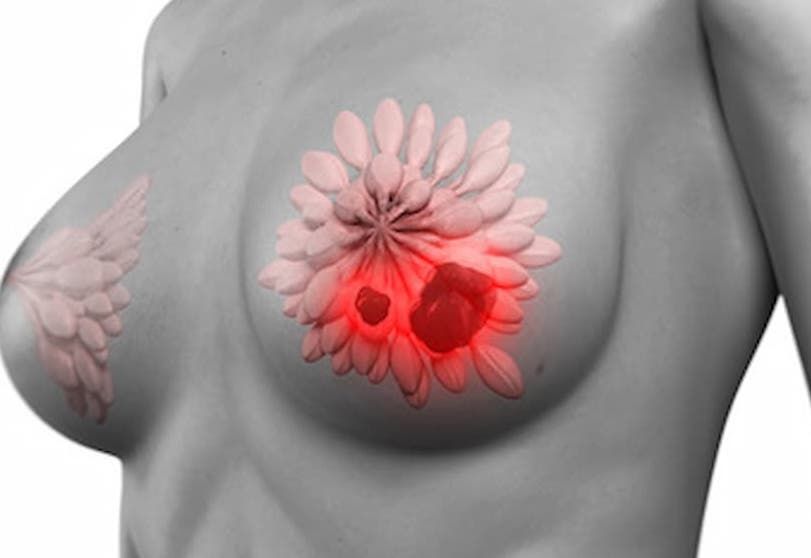Exclusive Radiation Therapy Improves QOL and Safety Outcomes in Breast Cancer
When compared with endocrine therapy, radiation therapy improved quality of life and adverse effects data, the phase 3 EUROPA study showed.
When compared with endocrine therapy, radiation therapy improved quality of life and adverse effects data, the phase 3 EUROPA study showed.

Exclusive postoperative radiation therapy offered better health-related quality of life (HRQOL) status and demonstrated a lower incidence of treatment-related adverse effects (TRAEs) than exclusive adjuvant endocrine therapy at 24 months in older patients with stage I luminal-like breast cancer, according to data from the randomized, phase 3 EUROPA trial (NCT04134598) presented at the 2024 San Antonio Breast Cancer Symposium (SABCS).
Regarding HRQOL, the radiation therapy group had a median QLQ-C30 GHS score of 71.9 (SD, 19.1), and the endocrine therapy group had a baseline median score of 75.5 (SD, 19.3). At 24 months, the radiation therapy group had a mean change from baseline of –1.1 (SD, 18.8) and the endocrine therapy group had a mean change from baseline of –10.0 (SD, 25.8). Adjusted for age and G8 score, the radiation therapy group had a median change of
–3.40 (P = .13), and the endocrine therapy group had a median change of –9.79 (P <.0001), both at 24 months.
Additionally, per the QLQ-C30 function scale, the radiation therapy group showed better outcomes in physical functioning, role functioning, emotional functioning, cognitive functioning, and social functioning. Per the QLQ-C30 symptom scales, the radiation therapy group had more favorable outcomes for most symptoms including fatigue, nausea and vomiting, pain, dyspnea, insomnia, and appetite loss.
Per the QLQ-BR45 symptoms scale, the radiation therapy group again showed better outcomes compared with the endocrine therapy group, which demonstrated statistically significant worse rates of systemic therapy (P = .047) and skin mucositis symptoms (P = .038).
Survival outcomes in the interim analysis showed that, at 24 months, neither group had any occurrences of ipsilateral breast tumor recurrence (IBTR), locoregional relapse, or breast cancer-related death.
Treatment-related treatment-emergent adverse events (TEAEs) were experienced by 65 patients (67.0%) in the radiation therapy group and 76 patients (85.4%) in the endocrine therapy group (difference, –18.4; 95% CI, –30.2 to –6.2). In each group, 2 patients reported TEAEs that were fatal: esophageal neoplasia and Listena meningitis in the radiation therapy group and pneumonia and ischemic heart disease in the endocrine therapy group.
The most common TEAEs (occurring in more than 20% of patients) were arthralgia (28.9%), fatigue (33.0%), breast pain (38.1%), and bone pain (23.7%) in the radiation therapy group and arthralgia (69.7%), fatigue (44.9%), hot flashes (32.6%), myalgia (31.5%), bone pain (28.1%), and alopecia (25.8%) in the endocrine therapy group.
Within 24 months, 22.5% of patients who received endocrine therapy switched to a different treatment, and 12.4% of patients discontinued endocrine therapy.
“Radiation therapy or endocrine therapy may be a viable single-modality treatment option, emphasizing the need for a multidisciplinary and patient-centered personalized care,” lead study author Icro Meattini, MD, an associate professor at the Department of Clinical and Experimental Biomedical Sciences “M. Serio” of the University of Florence in Florence, Italy, and coauthors wrote in the presentation.
Primary end points of the study were HRQOL assessed by the global health status scale of the European Organization for Research and Treatment of Cancer at 2 years and the IBTR rate at 5 years. Secondary end points were locoregional recurrence, overall survival, contralateral breast cancer, safety, and HRQOL QLQ-C30/BR45 module domains.
A total of 926 patients were enrolled and randomly assigned, in a 1:1 ratio, and stratified by age (70-79 years vs 80 years or older) and G8 score (14 or lower vs higher than 14) to either the exclusive postoperative radiation therapy group or the exclusive adjuvant endocrine therapy group.
In the radiation therapy group, patients received either whole breast irradiation at 40 Gy in 15 fractions or 26 Gy in 5 fractions via external beam radiation therapy (EBRT) or partial breast irradiation at 26 to 30 Gy in 5 fractions via EBRT; 32 Gy in 8 fractions or 30.3 Gy in 7 fractions via brachytherapy high dose rate; or 0.60-0.80 Gy/hour to 50 Gy via brachytherapy pulsed dose rate. In the endocrine therapy group, patients received aromatase inhibitors or tamoxifen (Soltamox) for 5 to 10 years, per physicians’ choice of treatment.
In this analysis, 207 patients were included (n = 104 in the radiation therapy group and n = 103 in the endocrine therapy group). In the radiation therapy group, 88 patients (84.6%) received partial breast irradiation, and 16 patients (15.4%) received whole breast radiation. The majority of patients were between the ages 70-79 (74.0% in the radiation group and 71.8% in the endocrine group) and had G8 scores higher than 14 (59.6% in the radiation group and 60.2% in the endocrine group).
Patients were 70 years or older and had early luminal-like breast cancer with the following characteristics: HER2-negative, estrogen/progesterone receptor of 10% or more, Ki67 index of 20% or lower, stage pT1ab N0/Nx, any grade or PT1c, grade 1-2.
Reference
Meattini M, Carmen De Santis M, Visani L, et al. Exclusive endocrine therapy or radiation therapy in women aged 70+ years with luminal-like early breast cancer (EUROPA): preplanned interim analysis of a randomized phase 3 trial. Presented at: 2024 San Antonio Breast Cancer Symposium; December 10-13; 2024; San Antonio, TX. Abstract GS2-02.
Newsletter
Stay up to date on recent advances in the multidisciplinary approach to cancer.